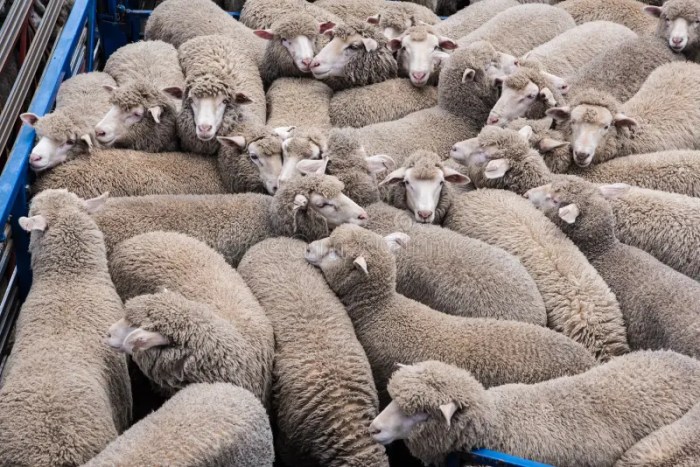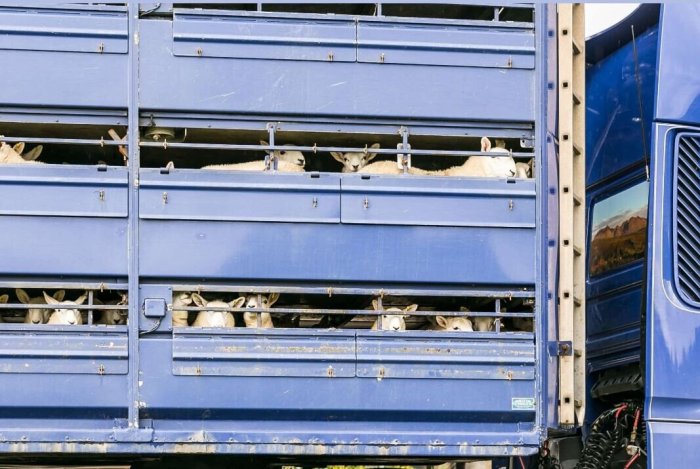How to transport sheep is a comprehensive guide that delves into the intricacies of transporting sheep, providing valuable insights for farmers, livestock handlers, and anyone involved in the safe and efficient movement of these animals.
From pre-transport considerations to post-transport care, this guide covers every aspect of sheep transportation, ensuring the well-being of the animals and compliance with legal requirements.
Pre-Transport Considerations: How To Transport Sheep
Ensuring the well-being and safety of sheep during transport requires careful planning and preparation. Prior to embarking on any journey, it is crucial to consider several key factors.
Health Checks and Vaccinations
Prior to transport, sheep should undergo thorough health examinations to ensure they are fit for travel. This includes checking for any signs of illness, injuries, or parasites. Vaccination against common sheep diseases, such as footrot and scabby mouth, is also recommended to prevent the spread of infection during transport.
Mode of Transport Selection
The appropriate mode of transport for sheep depends on the distance and number of animals being transported. For short distances, a well-ventilated trailer or van may be sufficient. For longer journeys, specialized livestock trailers or trucks with temperature control and adequate ventilation are recommended.
Legal Requirements and Documentation
Transporting sheep across borders or between states may require specific documentation and permits. It is essential to check with the relevant authorities to determine the necessary paperwork and ensure compliance with all legal requirements.
Vehicle Preparation
Preparing the vehicle for transporting sheep is essential for ensuring their comfort and safety during the journey.
Vehicle Specifications
The ideal vehicle for transporting sheep should provide adequate ventilation, sufficient space, and appropriate flooring. Ventilation is crucial to prevent the buildup of ammonia and other harmful gases. The vehicle should have sufficient headroom to allow sheep to stand comfortably and enough space to move around without overcrowding.
Vehicle Preparation
Before loading sheep, the vehicle should be thoroughly cleaned and disinfected to prevent the spread of disease. Installing ramps or loading gates can facilitate the loading and unloading process and minimize stress for the animals.
Vehicle Security

To prevent accidents during transport, it is essential to secure the vehicle properly. This includes securing any loose items, ensuring the ramps or gates are securely fastened, and checking that the vehicle is in good working condition.
Loading and Unloading Techniques

Proper loading and unloading techniques are crucial for the well-being of sheep during transport.
Loading Techniques, How to transport sheep
When loading sheep, it is important to handle them calmly and avoid causing unnecessary stress. Crowd control is essential to prevent stampedes and injuries. Sheep should be loaded onto the vehicle in small groups, and care should be taken to ensure they are evenly distributed throughout the space.
Unloading Techniques
At the destination, sheep should be unloaded carefully and calmly. Providing a ramp or chute can facilitate the unloading process and minimize stress for the animals. It is important to ensure that the unloading area is safe and free from hazards.
Equipment for Loading and Unloading
Loading ramps and chutes are essential equipment for facilitating the loading and unloading of sheep. These devices provide a safe and efficient way to move sheep between the ground and the vehicle.
Transportation Management
Monitoring sheep during transport and managing the environment within the vehicle is essential for their well-being.
Monitoring Sheep
During transport, sheep should be observed regularly to ensure they are not showing signs of stress or distress. This includes checking for any signs of illness, injuries, or respiratory problems. Providing water and rest breaks can help reduce stress and improve the overall health of the animals.
Temperature Control, Ventilation, and Humidity

Maintaining appropriate temperature, ventilation, and humidity levels within the vehicle is crucial for the well-being of sheep during transport. Adequate ventilation is essential to prevent the buildup of ammonia and other harmful gases. Temperature control is important to prevent heat stress or hypothermia, and humidity levels should be managed to prevent respiratory problems.
Potential Risks and Challenges
Transporting sheep can pose several potential risks and challenges, including accidents, extreme weather conditions, and disease outbreaks. It is important to be prepared for these risks and have strategies in place to mitigate them.
Post-Transport Care

Providing immediate care to sheep upon arrival at their destination is essential for their recovery from the journey and to prevent any long-term health issues.
Unloading and Handling
Sheep should be unloaded calmly and carefully, ensuring they are not injured or stressed during the process. It is important to provide a safe and comfortable environment for them to rest and recover.
Monitoring and Care
After transport, sheep should be monitored closely for any signs of stress, illness, or injury. Providing them with access to fresh water and feed is essential, and they should be given time to rest and recover before being moved to their final destination.
Signs of Stress or Illness
If sheep show any signs of stress or illness after transport, it is important to seek veterinary attention promptly. Early detection and treatment can help prevent serious health issues and improve the overall well-being of the animals.
Query Resolution
What are the legal requirements for transporting sheep?
Legal requirements vary depending on the jurisdiction. It’s essential to check with local authorities for specific regulations regarding animal transportation.
How can I minimize stress for sheep during transport?
Provide ample space, ventilation, and rest breaks during transport. Handle sheep calmly and avoid overcrowding.
What should I do if a sheep becomes injured or ill during transport?
Seek veterinary attention immediately. Isolate the injured or ill sheep and provide appropriate care until veterinary assistance arrives.
